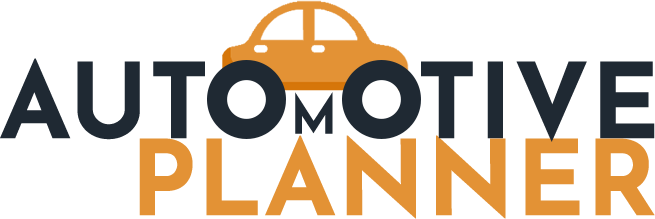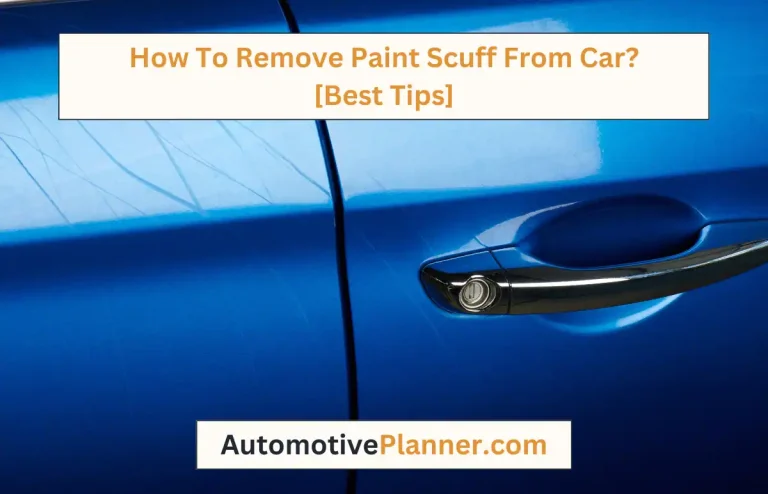How To Fix Car Paint Bubbles?
After painting your car to restore a brand-new look, the appearance of bubbles and blisters can be truly disappointing. It pops up due to high temperature or maybe, the application was not done properly. Whatever the reason, it is important to fix it fast to avoid further damage.
To fix car paint bubbles, it is important to sand properly to remove the blistered paint. Clean the residue and then prepare the surface for repainting. Once ready, apply primer and filler. Next, you can follow the procedure of painting a layer on the affected areas.
In this article, I will focus on the procedure to fix car paint bubbles and add more relevant information to prevent bubbles and maintain a fine car look. So, stay with me.
6 Steps To Fix Car Paint Bubbles: A Step-by-Step Guide
Though not a difficult task, you must follow a sequence and trust the process of removing and repainting the car. Mistakes in the process can be unrewarding and lead to further issues.
So, risks are not entertained! Here is a step-by-step guide on fixing the car paint bubbles.
Step 1: Remove the Bubble and Clean
If the blisters are large and coming off the car surface, use a putty knife to remove them by scraping them off. Do it until the bubble is gone and no more visible.
Once removed, brush off the area to clean the dust and particles. Clean the working area too so that no dust can settle on the car surface.
Step 2: Start Sanding
Once the paint bubbles are cleared out, now you need to smoothen the car body. For smoothening and discarding the layers of remaining paint, you need to sand it. Start sanding with 80-grit sandpaper and work in portions.
Sand thoroughly moves all across the surface and corners where you are thinking of repainting. Sand until there is no paint left.
The surface should be rough and dusty after you sand it well. Next, use a wet towel or cloth to remove the dust from the car thoroughly.
Step 3: Wet Sand the Surface
After you dry sand, there is a chance of scratches and marks on the body. To remove that and get a polished finish, I prepare to wet sand before we start repainting.
The process starts with soaking a sponge in water and wetting the surface. Then, wet 320-grit sandpaper and sand the surface.
Keep dampening the surface and sand with the wet sandpaper each time you work on the portions. Once you see a smooth body, it is time to move to the next step.
Step 4: Apply Mineral Spirits and Primer
Mineral spirits are known for cleaning surfaces and thinning the paint. Thus to form a stable base, use a cloth or paintbrush to put a layer of mineral spirit on the area to be painted. Let it dry.
Next comes the application of primer. To allow the paint to settle and bond to the car surface, applying primer is mandatory. Apply a thin layer of primer and let it dry. Put on a second coat to form a strong base of primer on the car body.
Step 5: Add Body Filler
Body filler is used to smoothen the car’s body surface so that you don’t see bumps after painting. Add a layer of body filler and let it dry.
As it hardens, you would require to sand it to achieve a fine and plain finish. After sanding, wipe the surface thoroughly to remove any trace of dirt.
Step 6: Repaint
Now that the surface is prepared, you can mix the paint with thinner and start painting. Don’t overlap the layers of paint on the surface. Put a layer, let it dry, and then go for another coating if required. Done!
Causes of Car Paint Bubbles With Solutions: Prevention Methods
Knowing the causes of bubbles over car paint can help you prevent it. There are several reasons why blisters appear on the car paint. Though some reasons are unavoidable, others can be minimized if handled with care. Fortunately, each problem has solutions.
Have a look at the causes with solutions and try to find out which one is responsible for your condition.
| CAUSES | Solutions |
|---|---|
| The most common and unavoidable reason can be a hot and humid climate. When there is excessive moisture in the air, it penetrates the paint and creates hollow spaces which appear as bubbles. | Avoid working in a humid space. Keep the space dry and turn on a ceiling or stand fan to remove the excess moisture from the area. |
| Another usual reason is the overlapping of paint. If too much paint is applied, they fail to bond with the body and come off the surface in the form of bubbles. | Don’t put too much paint. Apply in thin layers and let the coatings dry properly before you put on another layer. |
| If dirt particles and moisture gather on the surface and you paint over it without cleaning, bubbles may appear. The paint has to be applied on a plain surface. | Clean the surface with a damp cloth before you apply any thinner, primer, or paint on it. |
| Using poor-quality paint and thinner can be a major issue. They don’t mix well and fail to adhere to the surface. As a result, the paint comes off the surface creating blisters. | Buy thinner suitable to the paint and of high quality. Buy products you can trust. |
| If you apply the paint before the layers dry, bubbles may appear. The moisture of the layers below stays on the surface which causes bubbles. | Let each layer of thinner, primer, and filler dry before you paint. |
FAQs
Can Bubble In Car Paint Corrected?
Yes, it is possible to correct the bubble in car paint. For that, you require to remove the old layers and bubbles by sanding. Once the surface is smooth, you can prepare the surface and reapply the paint.
How Much Does It Cost to Fix Car Paint Bubbles?
Depending on the products and tools you buy, the cost of fixing may vary. However, the cost of fixing the paint bubbles would be at least $50 which can go up to $100.
Can Heat Cause Car Paint Bubbles?
Yes, heat is a major cause of car paint blisters and bubbles. When the heat is high and the climate is humid, the moisture gets locked inside the paint layers. As a result, the bubbles appear.
Can You Fix Rust Car Paint Bubbles?
When the bubbles stay for too long, the moisture can cause rust on the car’s body. To fix it, you need to sand the surface thoroughly to remove the layers of rust. Once removed, you can prepare it for repainting.
Can Cold Cause Car Paint Bubbles?
When it is too cold, the duration for the layers to dry is more. Thus if you don’t spare enough time for the layers to dry, bubbles may appear. Let the layers dry out completely to avoid bubbles.
Conclusion
Now that you know the causes of car paint bubbles, address the exact issue that is causing your car paint to blister. Once you address the problem, you would easily find the solution from the guide above.
Follow the method of fixing the car paint bubbles mentioned above.








